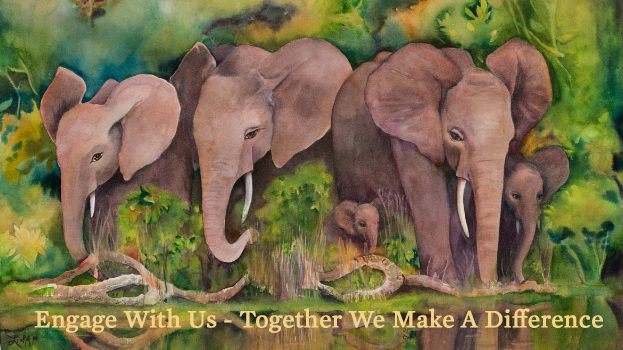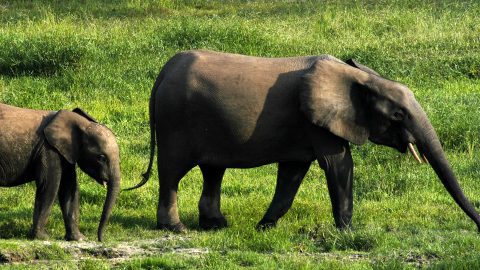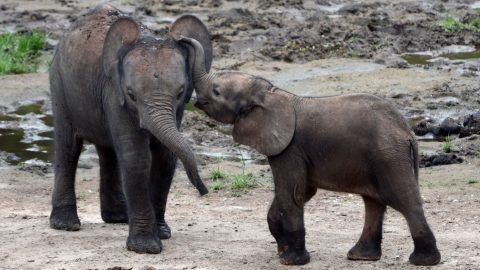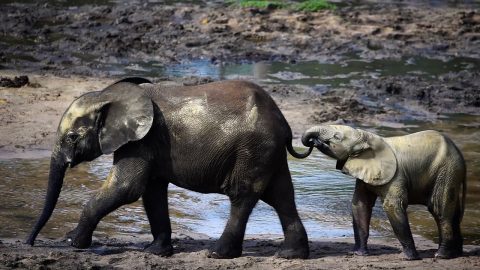Forest Elephants
A Different Kind Of Elephant
The last living elephants with a chance at preserving their original lifestyle
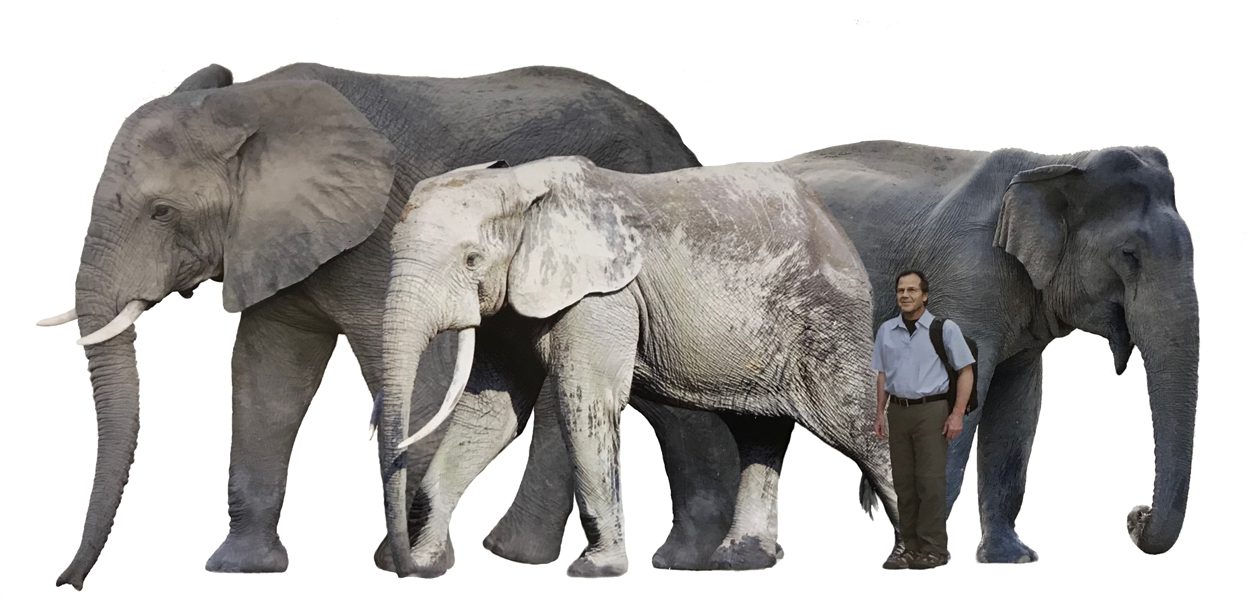
Forest elephants are the least well known of the three species of elephants. Found in the rainforests of the Congo Basin of Central Africa and in small, isolated populations in West Africa, their habitat, diet, size, and even DNA make them distinct from Asian and African savanna elephants. They are the largest rain forest-dwelling mammal, adapted to survive in the dense vegetation.
Forest elephant populations are in severe decline due to habitat loss and poaching for ivory. If we can stop, or even reverse, this decline, forest elephants actually have the best chance of any elephant species to persist with the full range of behaviors and landscape movements that evolved for survival in their rainforest home. This is because there still are huge expanses of relatively unexploited forest in Central Africa (the second largest tropical forest landscape on earth), and the human population density is relatively sparse and urban. Elephants can move across quite large distances and in East Africa and Asia they are increasingly fenced into protected areas, causing a suite of management problems. Keeping forest elephants roaming freely through Gabon and Congo and Cameroon is our goal.
Thermal imaging is just one of the ways ELP studies and monitors elephants. Valentine, only six hours old in this video, is only the second baby forest elephant ever seen being born. (Thermal imaging shows surface temperature: the scale here is from cool purple to hot yellow.) Valentine’s mother is the bright yellow female – hot because she has been hassled by a pesky young male ever since giving birth.



